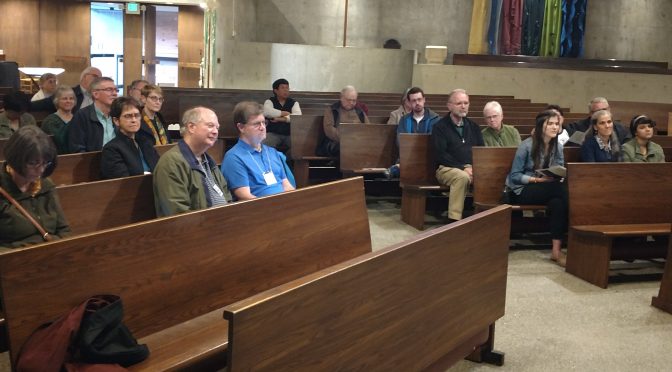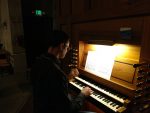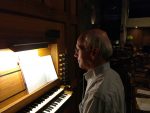In the present time, it is probably safe to assume that Clicquot champagne is better known than Clicquot organs. However, in eighteenth century France, the Clicquot name would have been more widely recognized as the family name of the organ building legacy that includes Notre-Dame and St. Gervais.
François Couperin was born into a musical family, much like J S Bach. Eight generations of Couperins served the St. Gervais church. François began his organ career at an early age, sitting on the bench as a child as his father played. His father died when François was only eleven years old, but by that time, the church had already signed an agreement to name François as organist on his eighteenth birthday.
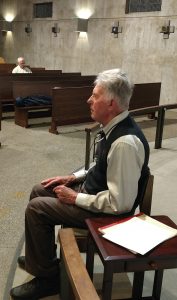
Thus David Dahl, Organist Emeritus at Pacific Lutheran University and Christ Episcopal Church, introduced the first program of the 2018-2019 year for the Tacoma Chapter of the American Guild of Organists. The program, entitled “Celebrating the 350th Anniversary of the Birth of François Couperin,” focused on the historical context of the organ mass–and, in particular, the practice of alternating organ stanzas with sung parts of the mass.
In 1789, at the age of 21, François Couperin published two organ masses–the Mass for the Parishes, intended for a large space such as St. Gervais; and the Mass for the Convents, intended for use by individual monasteries. Both are based on the practice of alternatum, the alternation of the sung parts of the mass with organ stanzas.
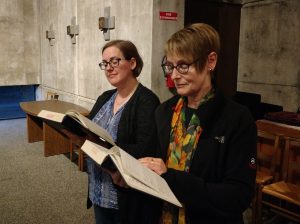
For this program, David Dahl chose to focus on the Mass for the Convents. Opening the demonstration portion of the program, AGO members Sheila Bristow (program chair) and Satya Jaech ( board member) sang the opening verse of the Kyrie, alternating with organ verses played by Cooper Sherry, also a Tacoma AGO board member.
Time did not permit a complete performance of the mass. Instead, seven performers, all members of the Tacoma AGO, played selected examples as David Dahl discussed the progression of the mass through the Gloria, Offertoire, Sanctus, Elevation, Agnus Dei, and Deo Gratias. Performers included Cooper Sherry, Sheila Bristow, Shari Shull, Thomas Clark, Mark Brombaugh, Satya Jaech, and Paul Tegels.
The French were particularly interested in organ color, going so far as to name pieces primarily for the prescribed registration. For example, the opening organ verse of the Kyrie is named “Plein jeu: Premiere Couplet du Kyrie”, indicating that the organist should use the defined combination of flue stops known as a plein jeu–all of the principal stops of the grande orgue from 16 feet to mixtures. Similar names might indicate a chorus of reeds or a solo stop. The Christ Episcopal Church organ, built by John Brombaugh, is particularly well suited for classical French music. It features two cornet combinations. The cornet sound is composed of five pipe lengths, either as individual stops or a single one: 8 ft, 4 ft, 2 ft, 2 2/3 ft, and 1 3/5 ft. It is a prominently featured tone color in classical French organ music, similar to a reed but stronger than a reed in the upper range.
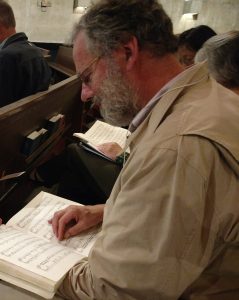
After David Dahl’s final comments, the program concluded with Paul Tegels, Associate Professor of Music and University Organist at Pacific Lutheran University, playing the last couplet of the Agnus Dei and the Deo Gratias.
The meeting concluded with a wine and cheese reception prepared by Nancy Ferree and Loi Le.
Credits: Thanks to David Dahl for sharing his vision, charm and expertise in French classical organ music, Loi Le for designing the handout, and Sheila Bristow, program chair. Thanks also to the seven organists for bringing the music to life, and to Mark Brombaugh and Christ Episcopal Church for making the building and organ available for this meeting.
A handout prepared by David Dahl is attached to this article.

